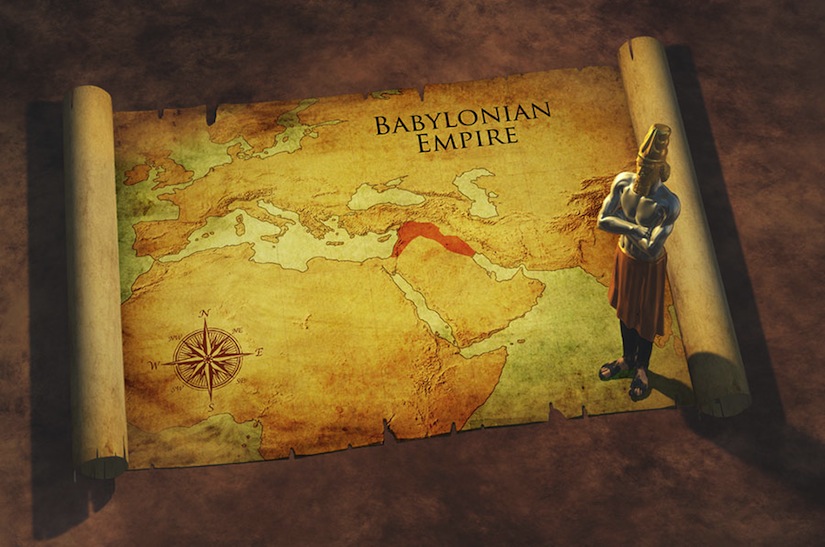

These ten horns are probably the list of Caesars leading up to Christ, and then a little horn, a single Caesar, who was probably Titus, the general who became Emperor because he crushed Jerusalem, and he's the one who destroyed the temple. Then later in chapter 7, you have the same kingdoms this time represented as animals: Babylon the lion, Persia the bear, Greece the leopard, Rome the monster with 10 horns. Well, that's probably not speaking of the state of Israel, but that’s speaking of Christ, the Son of Man and His kingdom. But, finally, there is going to be the Roman Empire made of iron and clay, but all of these empires, the whole image of the ungodly kingdoms, will be shattered by one stone, the Son of Man whose kingdom will have no end. Daniel 2:35 tells us, “But the stone that struck the image became a great mountain and filled the whole earth.” Jesus said in Matthew 24, “not one stone will be left upon another.” Nebuchadnezzar’s vision in Daniel 4 should be read with Daniel 2: that vision has four major empires that have persecuted God's people signified in an image made of different layers of materials the head is made of gold (that’s Nebuchadnezzar’s Babylonian Empire), the chest and arms of silver (the Medo-Persian Empire), and the torso of bronze (the Greek Empire under Alexander the Great).

Historically, most Christians have held that this is referring to the sacrifice of Christ, the Anointed One, and to his prophecy in Matthew 24 that he is going to put an end to sacrifice, he is the end of all sacrifices, and that the temple itself will be destroyed. And then “He shall make a strong covenant with many for one week and for half of the week he shall put an end to sacrifice and offering and on the wing of abominations shall come one who makes desolate” (Dan. Isaiah 53 says the Messiah, the suffering servant, will be cut off from the land of the living and make atonement for his people (Is. You see that in the passage, a reference to the Anointed One and he shall be cut off and have nothing. This is part of what's called the “apocalyptic literature” where often you have numbers and extraordinary natural occurrences, moons being turned to blood and that sort of thing, as symbolic of earth-shattering historical events.įor most of Christian history, the 70 weeks have been interpreted in relation to Christ and His kingdom. Almost everyone interprets the weeks as symbolic. There are various approaches that Christians take to explain these 70 weeks. And the people of the prince who is to come shall destroy the city and the sanctuary. Its end shall come with a flood, and to the end there shall be war. Desolations are decreed. And he shall make a strong covenant with many for one week, and for half of the week, he shall put an end to sacrifice and offering. And on the wing of abominations shall come one who makes desolate, until the decreed end is poured out on the desolator. Then for sixty-two weeks, it shall be built again with squares and moat, but in a troubled time. And after the sixty-two weeks, an anointed one shall be cut off and shall have nothing. Know therefore and understand that from the going out of the word to restore and build Jerusalem to the coming of an anointed one, a prince, there shall be seven weeks. Seventy weeks are decreed about your people and your holy city, to finish the transgression, to put an end to sin, and to atone for iniquity, to bring in everlasting righteousness, to seal both vision and prophet, and to anoint a most holy place. Horton gives an answer in Episode 28 of the Core Christianity Radio Show. What do the 70 weeks described in the passage refer to? Is it referring to the events of Daniel's day, or to the future of the nation of Israel? Or something else entirely? Dr. Editor's Note: There are many difficult passages in the Bible and Daniel 9:24-27 is one that many people are confused about.


 0 kommentar(er)
0 kommentar(er)
